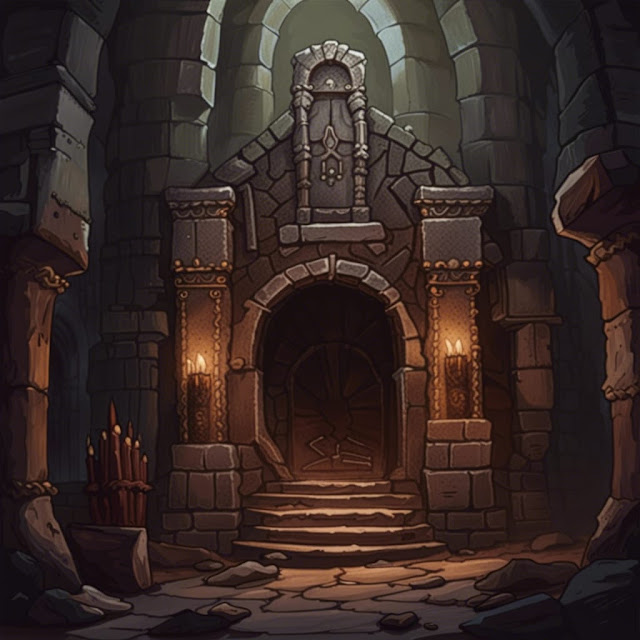This Old Dragon: Issue #57
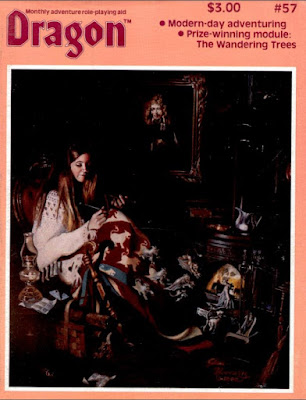 Time delve into the box under my desk and pull out an old, musty Dragon Magazine. Today we go all the way back to January 1982. Chevy Chase's "Modern Problems" is in the movie theatres, which is notable for the real acting debut of Broadway actor/singer Nell Carter. Olivia Newton-John is still dominating the airwaves with "Physical," and on the shelves in Waldenbooks and FLGS across the land is This Old Dragon #57.
Time delve into the box under my desk and pull out an old, musty Dragon Magazine. Today we go all the way back to January 1982. Chevy Chase's "Modern Problems" is in the movie theatres, which is notable for the real acting debut of Broadway actor/singer Nell Carter. Olivia Newton-John is still dominating the airwaves with "Physical," and on the shelves in Waldenbooks and FLGS across the land is This Old Dragon #57.Our cover comes from Dean Morrissey. I don't know much about it really. My copy doesn't even have it.
Jake Jaquet's editorial mentions the first time he heard "Dungeons & Dragons" mentioned on TV; during an episode of "Simon & Simon," no less.
Kim Mohan's Cover to Cover overview covers what we will see in this issue.
Out on a Limb covers letters about previous issues' content. Typically, things the readers didn't like.
Classic Dragon MVP Ed Greenwood is up first with Modern Monsters. He gives us some AD&D (though I think it could all work for D&D too; this was the time when a distinction had to be made) stats for various modern objects like cars and modern weapons. Also, how *D&D characters can deal with with them with and without the magic they are used to. This is a rather great article and one that should be referenced for "City Beyond the Gate" when it appears in Dragon #100.
Nice ad for FGU's Space Opera. Well...the ad itself in nothing special, but the listing of game stores that carry it is. I find it interesting that my home state (Illinois) had more game stores than the others. This could have been because FGU was located in Chicago. Also, there was a game store in the town I now live in that is no longer there. It's now a Pizza place.
Len Lakofka's Leomund's Tiny Hut is up with detailed information on shield and weapons skills in AD&D and what you can expect any particular group of humanoids to have. Very detailed, and while I appreciate this, I am (and was) of the mind to say "given them all swords and call it 1d6 of damage each." Not as realistic I am sure, but certainly will get the job done. Len took this stuff a lot more seriously than I do.
Not to be outshined, Gary is up with one his From the Sorcerer's Scroll with "Developments from Stonefist to South Province" for his World of Greyhawk setting. One day I need to do a retrospective all of his writings. I feel that something like this would have been done already. In any case, it is a fun little look into the "current events" of Greyhawk. Something I think I appreciate more now than I did then.
Moving from AD&D to Top Secret we have In Search of A James Bond by Mark Mulkins. Or how the famous 007 would fit into the Top Secret game. Something I am sure EVERYONE playing Top Secret tried at one point or another. A lot of this is particular to the game mechanics of Top Secret including how move Bond between agencies.
Merle M. Rasmussen, as expected, follows up with his Spy's Advice column for Top Secret. Top Secret always looked like a fun game but one I never got into. I am a little surprised we have not seen an OSR version of this game yet.
Pete Mohney has a quick on with Random Magic Items. A set of tables meant to aid the DM and supplement the DMG.
For DragonQuest fans, there is The Versatile Magician by Jon Mattson. This covers new skills for the Magician. It looks good and I'll add it to my big DragonQuest set of notes for if or when I ever get to play it again.
Up next is one of my favorite series from the Classic Dragon days, Giants in the Earth. I know a lot of ink was spilled to tell us how D&D/AD&D was not a novel and visa-versa, but I did love seeing these literary characters get represented as D&D characters. In this issue we have C. J. Cherryh's Morgaine and Vanye from her "Morgaine Series" including the rather notorious (for its cover) "Fires of Azeroth." These books were a staple of the old Science Fiction and Fantasy book club. They were on my TBR pile forever. I really should give them a go. I have enjoyed C. J. Cherryh's other works. We also get Lynn Abbey’s Rifkin from "Daughter of the Bright Moon." This was also years before she would come to work at TSR. And finally two from Robert E. Howard; Belit and Dark Agnes.

Ok. The entire middle section of my Dragon is gone. Typical really, since it was an adventure, "The Wandering Trees." I checked my Dragon CD-ROM and sure enough, that is what it is. BUT by the rules I have established for myself here I really can't go over it. I will say this though, it was the second-place winner, IDDC II (International Dungeon Design Contest II) the OSR Grimoire has more on that. It also looks like a fun adventure. I am kind of sad I don't have it.
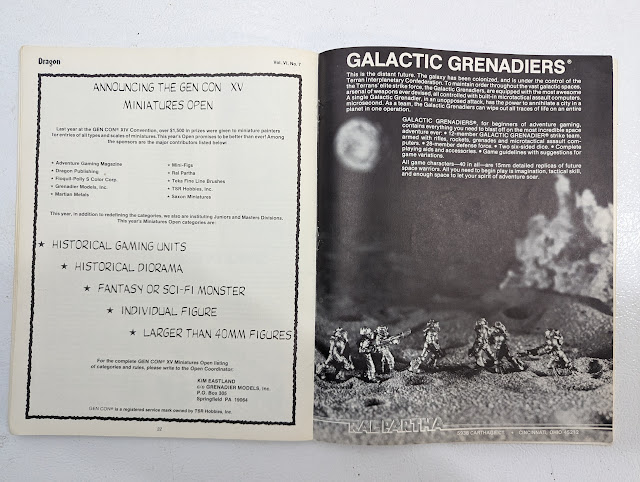
Up on a Soapbox is next. We get a rare Brian Blume editorial about playing evil characters. He concludes that no serious gamer will ever want to. Meanwhile, a good amount of the 5.2 Million Baldur's Gate 3 players (according to Steam) are going to at least try the "Dark Urge" option at least once. BUT in principle, I do agree. All things being equal I would rather play a Good character than and Evil one. Roger E. Moore is next with "Dungeons Aren't Supposed To Be 'For Men Only,'" an interesting bit of a slice in time. I am not 100% certain what the motive here is. Why? Well, it could be two equally valid things. Moore, or others, looked out at the vast demographic of D&D players and found the lack of women concerning. OR. They could have been responding to criticism. While I am NOT going to get into the personal views of the various creators of the game from nearly 40 to 50 years ago, I am going to take Moore at face value and say he is here (on his soapbox as it were) saying, yes women do, should, and can play D&D. Thankfully, this is also not an issue these days and the years since this time have made great strides for more and more inclusion.
You know the saying, "Getting off on the wrong foot?" I feel like that is where I am with the Minaria series. This month is The Chronology of Minaria by Glenn Rahman. I mean I know it is for Divine Right, but I never got into that game so I have no context for any of this. Here is what I get from it now. The 80s were a fun time. To think that TSR would spend valuable page resources (four full pages) on this is either amazing or amazingly short-sighted. I can't tell which, but I can say it was a very, very different time and a different mindset. If I posted my HUGE timeline of my Mystoerth world I would not expect anyone to be that interested. Maybe some, but enough? This was the last of the Minaria articles too. Since it would be two more years before I would buy a copy of Dragon at this point I am not surprised this series never contacted with me.
D&D's War Game roots are showing here in this next article from Michael Kluever on The History of the Shield. It's a neat article that goes into some historical detail about the focused development of the shield. It covers 9 pages (with some half-page ads here and there). It is interesting but more than I need for a typical D&D game. Granted, that is me. I would get excited about a 9-page on the history of scrolls or something magical. So every time I get a "Politics of Hell" there is one of these. It is a good article, but no where near my personal interests.
Reviews are up next. Tony Watson covers Star Viking a game I only sort of remember. It is a sci-fi mini-game for two players, a Viking and a Federate. Where the Viking player tries to raid bases and other ships and the Federate tries to stop them. Watson enjoyed the game and played around with variant ideas. I could see this game being reskinned as Star Trek, Orions vs the Federation style game easily. Might be fun. In what could be called an understated review, the brand-new superhero RPG Champions gets less than a half page (compared to the two given to Star Viking). Though Scott Bennie does say that the game does a very good job of emulating it's genre and he gives it a "hearty recommendation" despite it's flaws. Also the game was only 56 pages back then.
Simulation Corner by John Prados covers The Art of Illustration in games. I am not sure if I am missing something here but his thesis is "good art sells games and makes games better." Yes. But I think back to some of the art that was common prior to 1982 and maybe this was something that needed to be said.
The Electric Eye from Mark Herro goes over the recent survey about computer use among Dragon readers. Here are some interesting insights.
Age
Under 19: 63%
19-22: 9%
22-44: 25%
45+: 0%
Education Level
Students: 71%
Professional: 29%
This tracks and was expected for the time.
Access to Computers
None: 6%
Apple-l I: 17%
Apple-l I+: 29%
Apple-l I I: 0%
PET: 0%
CBM: 9%
VIC: 3%
TRS-80 (Mod. 1): 20%
TRS-80 (Mod. 2): 3%
TRS-80 (Mod. 3): 9%
TRS-80 (Color): 6%
TRS-80 (pocket): 0%
North Star: 3%
Atari (800): 11%
Atari (400): 9%
APF: 0%
OSI: 0%
ZX80: 0%
Exidy: 0%
Heath/Zenith: 0%
S-100: 6%
Other: 20%
Again, this feels right to me given the demographics above. Apple dominated the education market followed by TSR-80s. Atari was a popular home model and was in competition with the Vic-20/CBM and the TRS-80 Color Computer. This also makes me wish I had tried out the Atari 800/400 line more.
Only one reader had access too more than two different kinds of computers.
Most readers want more programs in the pages of Dragon, and all want articles on gaming-related topics. Readers were more or less equally divided on whether they buy, copy, or write their own programs.
The Convention Schedule tells what is hot in the Winter of 1982. February 5-7 were the dates for Gen Con South. Something I think Gen Con could do again.
Dragon Mirth has our comics. And we end with Wormy and What's New with Phil and Dixie!
So a very interesting snapshot in time of what was happening in the world of Dragon magazine. Not a lot of insight into the world of RPGs, unless you count the Electric Eye article.
I am curious to know what people's thoughts were on the included adventure.

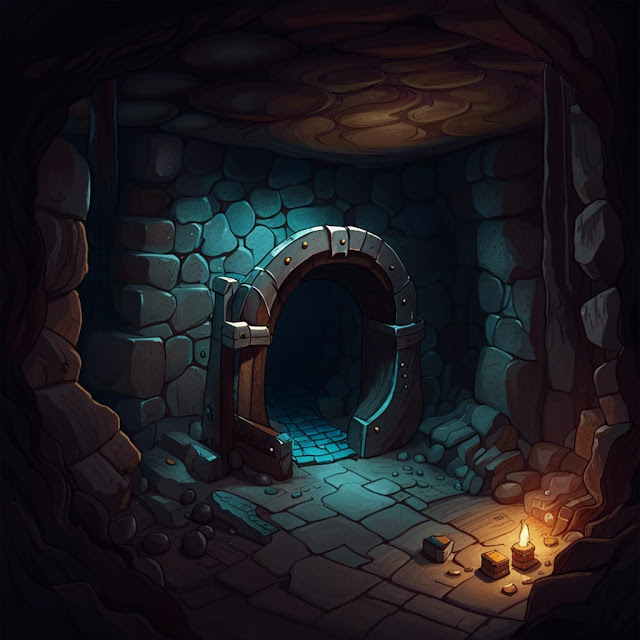
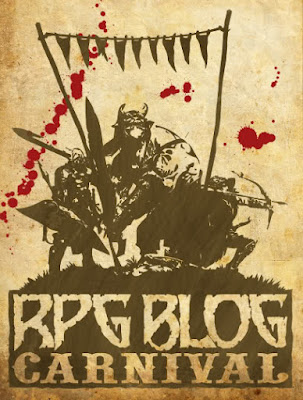

Fairy_Legends_p0239-dullahan.jpg)

